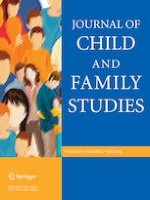14-01-2022 | Original Paper
Parental Psychological Control and Adjustment Among Detained Youth: Does Perceived Containment Matter?
Gepubliceerd in: Journal of Child and Family Studies | Uitgave 7/2022
Log in om toegang te krijgenAbstract
Parental psychological control is linked to adjustment difficulties, but the links to specific adjustment outcomes and factors that contribute to these links warrant further investigation given some mixed findings in the literature. The current study sought to expand the literature by examining associations between parental psychological control and proactive and reactive functions of aggression and symptoms of anxiety in a sample of detained youth. Additionally, perceived containment, or one’s belief that authority has the ability to regulate one’s behavior, was examined as a potential moderator of these associations. Findings indicated that both parental psychological control and perceived containment were uniquely associated with anxiety symptoms and reactive, but not proactive, aggression. However, no significant moderating effects were evident. Study results further support that parental psychological control and perceived containment independently contribute to both internalizing and externalizing symptoms among detained youth, with the most robust externalizing effect with reactive aggression.
